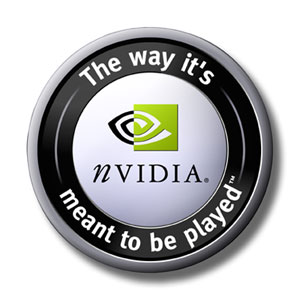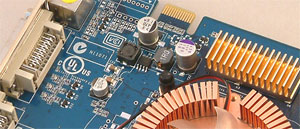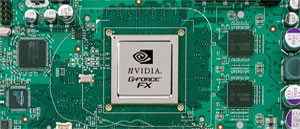

First, a quick backgrounder: The Way It's Meant To Be Played is a scheme that harnesses both NVIDIA's strong relationships with developers and its marketing muscle. Under the scheme, NVIDIA spends time with game developers helping them to code 3D engines on the PC, whether they are dedicated PC games or ports of console titles.
By providing comprehensive testing facilities to developers, NVIDIA aims to make sure than any game released with the badge on the box will run perfectly on NVIDIA graphics cards, preferably with suitable default settings programmed in. In this way, the consumer gets to have a no-nonsense out-of-the-box gaming experience, and NVIDIA gets to have its name associated with lots of top games - over 200 right now.
NVIDIA on: Why the scheme is needed
As Bill points out to us, console platforms - such as the Xbox or PS2 - are "Carefully managed. The level of control the hardware makers have over the platforms is huge." Because of this level of management, engines are written well, releases are timed so big names don't clash, the whole experience is far more pleasurable for the end-user. Because one PS2 is no different from another, the games are made to appeal to what Bill calls "the content enthusiast," not the hardware enthusiast.
By bringing developers together and creating a unified platform for the PC through its hardware and software, NVIDIA hopes that it can bring a level of management to the PC platform that will make the experience easier and better.

Daryll claims boldy that "We can take a console port on the PC from 10FPS to 30FPS in the space of a day... our engineers understand the PS2 architecture almost as well as our own graphics architecture."
Because NVIDIA's team of 40+ graphics engineers have spent years solving similar problems, they know the answers to the vast majority of problems that developers face on the PC and can solve them quickly.
By providing this technical expertise, Daryll says that they can show developers "Why it's worth spending the extra time to keep a title from just being a port.
"Our engineers can help ensure that a whole game engine is balanced properly, as well as dedicated graphics programming." He cites the example of EA, who usually take 18 months to move to a new API for game engines. With NVIDIA's help, it was able to develop DX9 features for titles like Need For Speed: Underground in record time.
NVIDIA on: the driving force behind its technology
NVIDIA say that their graphics technology is driven by what developers want. They have an advisory board of ten software houses that they work with to drive forward graphics architecture. As well as including many smaller developers, Bill points us to "NVIDIA's special relationships with developers like Blizzard and Epic, who we have been working with for 5 or 6 years."
Whilst confirming that he had been talking to Blizzard about their next game, he wouldn't confirm to us what that was!
Daryll adds: "Our PC technology is always ahead of consoles and pulling upwards."

NVIDIA on: the GeForceFX debacle
Putting the case rather understatedly, Bill tells us that "The GeForceFX transition was hard." Rather than delivering last-generation technology rebranded to fit the current number scheme - such as the GeForce 4 MX - "We made a conscious decision not to 'MX' ourselves. We wanted to deliver a DirectX 9 platform top-to-bottom, even if we compromised performance.
"Of course, that transition is paying off, because the GeForce 6 series has both the platform and the performance. We're ahead of ATI here, because they are still putting out old technology in their low-end cards."
NVIDIA on: the Xbox and next-generation PlayStation
We asked the pair whether the use of NVIDIA graphics in the Xbox had helped them when it came to performance on PC titles. Here, we note the issues we've seen with Splinter Cell over the past few months, where the shadow rendering shared by the GeForce architecture on the Xbox and desktop provides better image quality than the ATI rendition.
Bill again: "The Xbox really wasn't as good for us as we had hoped. Many of the first games - like Dead or Alive, or Project Gotham - really weren't suitable for PC conversions". He did admit, however, that the next-generation PlayStation (which he wouldn't refer to as PS3) "Will be better for us. It's going to be so big."
NVIDIA on: SLi
"SLi is really for hardware enthusiasts," Bill tells us. He explains how SLi is such a small market segment, it's difficult for games developers to understand it or justify developing for it - but that NVIDIA's work with them in other areas justifies a little bit of quid pro quo. Despite its apparently small appeal, NVIDIA is incredibly happy with the amount of SLI motherboard shipped so far - set to be half a million by the end of this month.
Daryll was hopeful that the mod community would use the power to make some crazy extensions to existing games - "I'd love to see a mod that required SLi for performance!"
Conclusions
NVIDIA are obviously putting a lot of work into making sure that new PC titles run best on their hardware and into making the whole PC gaming experience a little bit better. We're grateful to Bill and Daryll for taking the time out to talk to us, and you can expect to see more articles on the developer side of PC graphics right here, very soon.

MSI MPG Velox 100R Chassis Review
October 14 2021 | 15:04






Want to comment? Please log in.